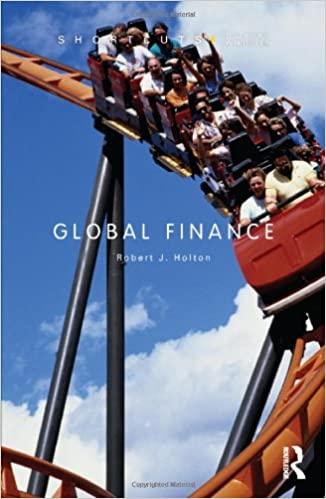Question
An equity buyout group intends to acquire Lynnwood as of the beginning of Year 8. The buyout group intends to finance 40% of the acquisition
An equity buyout group intends to acquire Lynnwood as of the beginning of Year 8. The buyout group intends to finance 40% of the acquisition price with debt bearing a 10% interest rate and 60% with common equity. The income tax rate is 40%. The cost of equity capital is 14%. Analysts at the buyout firm project the following free cash flows for all debt and equity capital stakeholders for Lynnwood (in millions): Year 8, $2,100; Year 9, $2,268; Year 10, $2,449; Year 11, $2,645; and Year 12, $2,857. The analysts project that free cash flows for all debt and equity capital stakeholders will increase 8% each year after Year 12. Questions (be sure to include your Excel spreadsheet with your calculations):
a. Compute the weighted-average cost of capital for Lynnwood based on the proposed capital structure.
b. Compute the total purchase price of Lynnwood (debt plus common equity). To do this, discount the free cash flows for all debt and equity capital stakeholders at the weighted-average cost of capital. Ignore the midyear adjustment related to the assumption that cash flows occur, on average, over the year. In computing the continuing value, apply the 8% projected growth rate in free cash flows after Year 12 directly to the free cash flows of Year 12.
c. Given the purchase price determined in Requirement b, compute the total amount of debt, the annual interest cost, and the free cash flows to common equity shareholders for Year 8 to Year 12.
d. The present value of the free cash flows for common equity shareholders when discounted at the 14% cost of equity capital should equal the common equity portion of the total purchase price computed in Requirement b. Determine the growth rate in free cash flows for common equity shareholders after Year 12 that will result in a present value of free cash flows for common equity shareholders equal to 60% of the purchase price computed in Requirement b.
e. Why does the implied growth rate in free cash flows to common equity shareholders determined in Requirement d differ from the 8% assumed growth rate in free cash flows for all debt and equity capital stakeholders?
f. The adjusted present value valuation approach separates the total value of the firm into the value of an all-equity firm and the value of the tax savings from interest deductions. Assume that the cost of unlevered equity is 11.33%. Compute the present value of the free cash flows to all debt and equity capital stakeholders at this unlevered equity cost. Compute the present value of the tax savings from interest expense deductions using the pretax cost of debt as the discount rate. Compare the total of these two present values to the purchase price determined in Requirement b.
Step by Step Solution
There are 3 Steps involved in it
Step: 1

Get Instant Access to Expert-Tailored Solutions
See step-by-step solutions with expert insights and AI powered tools for academic success
Step: 2

Step: 3

Ace Your Homework with AI
Get the answers you need in no time with our AI-driven, step-by-step assistance
Get Started


